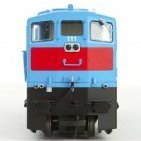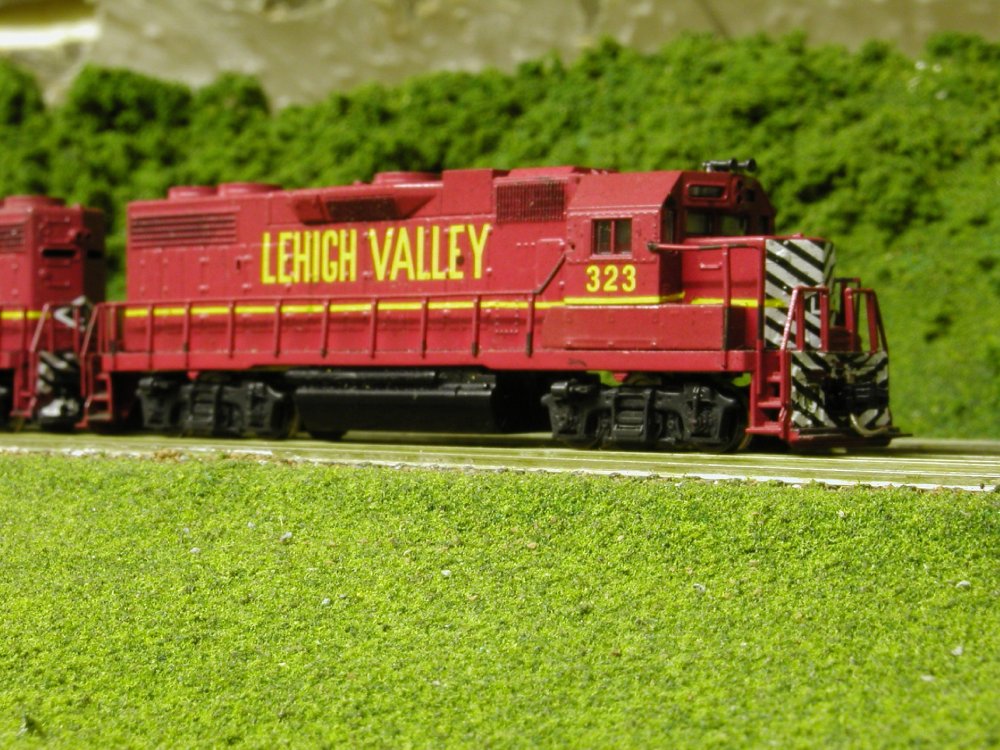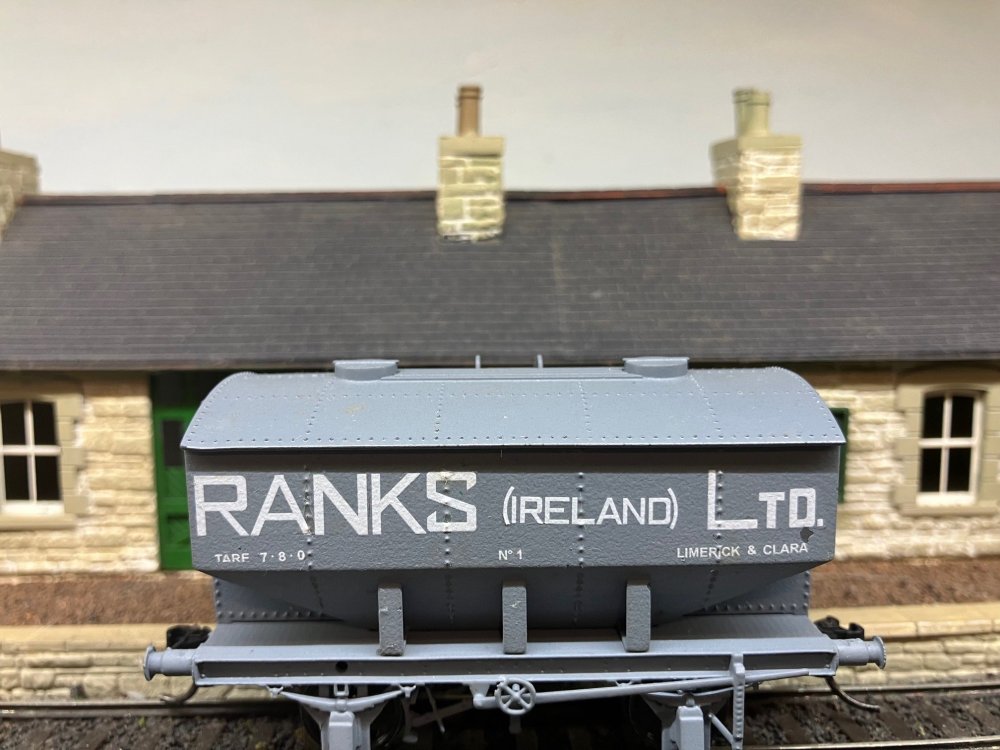-
Posts
4,873 -
Joined
-
Last visited
-
Days Won
119
Mayner last won the day on July 7
Mayner had the most liked content!
Personal Information
-
Location
Hamilton, New Zealand
Converted
-
Biography
Born Dublin, lived most of my life in Dublin and the UK. One time builder, moved to New Zealand several years ago. One time WHHR Volunteer Portmadoc, track ganger, diesel loco driver and bulldozer driver, plant operator, now an Armchair
Converted
-
Interests
My family, solving problems, anything to do with railways, travel, blues, rock, jazz, stirring thing
Recent Profile Visitors
The recent visitors block is disabled and is not being shown to other users.
Mayner's Achievements
-
I experienced similar issues accessing both this newsgroup and in accceesing the Accurascale website during the past week, otherwise no problems with internet access here in New Zealand or internationally.
-

"Voiding the Warranty" - Mol's experiments in 21mm gauge
Mayner replied to Mol_PMB's topic in Irish Models
Probabably worth checking out firms in the jewellery sector in Birmingham that carry out brass/lost wax casting. I have used a local business that carries out lost wax casting to produce brass castings from metal, resin, plastic masters and 3D models to produce brass castings including buffers. -

"Voiding the Warranty" - Mol's experiments in 21mm gauge
Mayner replied to Mol_PMB's topic in Irish Models
Bulkgrain loading/discharge arrangements at Ranks Clara The grating is likely to have been used for grain truck discharge after rail operations ceased, probably on top of an original rail discharge pit. A similar grating may have been used for rail discharge, possibly for one wagon linked by conveyor to the elevator system There was a concrete slab complete with two inset sidings when I visited the site 30 odd years ago, one of the sidings served a large grain elevator and a small dry corrugated good store, the second siding served a second larger dry goods store. -

"Voiding the Warranty" - Mol's experiments in 21mm gauge
Mayner replied to Mol_PMB's topic in Irish Models
Webbs Mill/Quarterstown may have focused on processing animal feed following the Cork Milling Co takeover. Mallow is an important dairying centre, its likely that the mill processed corn (maize) imported from the States as supplementary cattle feed during the winter/spring. Interestingly the Dairygold Mallow powder milk plant is similar in scale to plants in the Waikato and likely to have exported milk powder by rail through the Mallow. https://en.wikipedia.org/wiki/Dairygold. It looks like CIE experienced a signifiicant increase in bulk grain traffic during the mid-late 50s with the construction/modification of H Vans to Bulk Grain wagons, previously CIE had a total of 18 Bulk Grain Wagons built by the GSR during the mid-1930s, 10 railway owned wagons, 8 owned by Ranks Ireland for its own traffic. There is a photo in the NLI O'Dea collection of bulk grain being transferred from an ex-GS grain wagon to a truck at Fermoy station during the early-mid 60s. The grain was transferred from rail to road using a small portable (probabably petrol powered) screw conveyor) that allowed the graiin to be unloaded at track level without the aid of a pit. -
I used an LGB 22 Volt 2 amp combined controller and power unit while running analogue power before converting to DCC using a mid level Digitrax (Empire Builder) command station on the 5amp setting. I have used battery RC control for the past 10 years locos powered by pairs of 7.2v 3000ma NiMH batteries (14.2V). Unlike DCC radio control systems are produced by cottage industry suppliers such as RCTrains https://www.rctrains.co.uk/, probabably best to contact the Gauge 1 Society or Garden Railway groups if your looking at usingb battery RC.
-

"Voiding the Warranty" - Mol's experiments in 21mm gauge
Mayner replied to Mol_PMB's topic in Irish Models
In good company, apparrently the GSR manged to spell Drumshanbo incorrectly in both Irish and English on the bilingual station nameboard Possibly someone in authority knowing better or failing to check the spelling/pronounciation with the locals -

"Voiding the Warranty" - Mol's experiments in 21mm gauge
Mayner replied to Mol_PMB's topic in Irish Models
A product of the Irish education system with good grade in Irish when I completed my Leaving Cert 50 years ago I still haven't got my head around the pronounciation and use of the 'fada' and as they say the séimhiú "was in my fathers time" and he spoke about being put off Irish when a new teacher introduced the Munster (Kerry) dialect in a Galway school! Had fun and games with my Irish (Dub with a country accent) pronouncation of UK and some US placenames but eventually learned to pronounce some Welsh and Kiwi place names correctly mainly by listening to the locals. Back to Pauls dilemma, I don't think a GSR/CIE style bi-lingual signs board would be appropriate for a private siding, I seem to have mislaid my copy of a 1960 CIE WTT and unable to check the 'official railway" name of the siding. Its possible the Webb family may have sold the mill at some stage following the establishment of the Free State, Quarterstown House had been converted to a convent by the 1940s. Milling was supposed to have ceased by 1957. Cold Chon may not have bothered to advertise their presence signed into a long term contract to supply tar to the nearby Cork County council road depot and the 'mill owners" much incentive to maintain the place. The Land Commission began to acquire large country estates and divide the land into small holding from the early 1900s onwards, many of the large Country Houses were sold to religious orders or prominent Irish people during the 20s and 30s as members of the 'gentry' returned to the UK or consolidated their Irish holdings. A sign in the style of a Webb Milling sign or seal or a Quarterstown roadsign may be more appropriate. For many years the name of small towns/villages such as quarterstown were displayed on simple square road signs (black border and lettering on white background) in similar style to pre-1960 UK roadsigns https://www.hattons.co.uk/52086/ancorton_models_n_605_pre_1960_s_road_signs_set_5/stockdetail?srsltid=AfmBOorag12QA99NdUrAy8Z3h9lTVW5mF9PelAQm2nv1AqPb7N4_xe34 (without red triangle!) From memory names were sometimes in English or bi lingual cannot find a photo! -
Applying waterslide transfers over rivets/raised detail is bascially a case practice and suitable preparation and selection of suitable transfers, wetting agents & varnish/sealant. N Scale Lehigh Valley Diesel. One my pride and joy, very much a hard worked 'layout loco' I finished the loco in LV livery about 25 years ago using Microscale waterslide decal set, incl black/white nose/pilot stripes s, Micro-Set (wetting setting agent) Micro-Sol (solvent/softner) around details/irregular surfaces. Loco painted in a gloss aerosol red then, then finished with a semi matt aerosol. Paint did not adhere too well to handrails which were molded in a black flexible plastic. 4mm Ranks Ireland wagon (Enlargement shows up the blemishes!) Decals comissioned from Railtec Transfers, Humbrol Decalfix (recommended by Railtec, Micro-Set Micro-Sol incompitaible). Main challenge was applying large RANKS (Ireland) Ltd element of decal due to its sheer size, applied RANKS (Ireland) Ltd as 3 separate decals! (Ireland) after applying the two larger decals! Again model first spray painted grey with a gloss finish and then sealed with a matt/semi-matt finish once decals had dried out I originally intended to have the decal pad printed comercially, but printer declined to print further wagons after pad printing the initial batch of 20T Brake Vans
-
I agree with Andy that it would be best to start out with re-scaling one kit to 4mm both in terms of identifying any pitfalls in rescaling a model from 7-4mm scale and overwhelming the (very small) market for 4mm Irish outline kits. I usually managed to sell a minimum of 10 JM Design kits on the initial production run, though demand/sales for the MGWR Vans and the 4w Bulleid PO Van were significantly lower than other kits. A 4mm Alphagraphix J26 would largely duplicate the SSM MGW E Class/J26, the Alphagraphix kit appears to be based on a loco in late GSR/CIE condition with riveted smokebox, while the SSM kit in includes parts to assemble a loco in MGW/GSR condition with flush smokebox and parts to assemble the Tramore version of the loco with extended cab and recessed cab steps, so something of a Catch 22 situation, though I prepared an etched overlay for a riveted J26 smokebox. A J18/19 has been on my to do list for 40 years, so I'll put my hand up for two. John
-
Nickle silver basically a superior material to work, basically stronger, easier to solder and easier to paint compared to brass. Best contact Des on availability, Studio Scale models traditionally held kits in stock though may have shifted to supplying kits to order. Des supplied tender etchs and castings at relatively short notice for a GSWR 52 Class 4-4-0 I produced several years ago.
-
Studio Scale Models already produce a 4mm model of a Bandon Tank both roundtopped and Belpair firebox versions. https://www.studio-scale-models.com/B4.shtml
-
An important point to check with Roger is whether a 4mm loco chassis produced from 7mm artwork/photo tooling will be suitable for a OO gauge loco. The width over chassis on a 4mm loco produced from re-sized 7mm/Gauge 0 artwork may be too wide for OO. Alternatives would be: (a) to re-design the existing chassis so that its suitable for OO gauge (width over frames 12mm) or (b) the buyer purchasing proprietary etched or turned frame spacers and assembling the chassis as a conventional chassis. Although my 4mm MGW vans were designed to be assembled to OO or 21mm gauge, it was necessary to re-design the chassis when I re-scaled the artwork to 2mm scale for a customer.
-
I once thought of modelling the Irish Broad gauge to 8.57mm scale on Gauge 1 track to run on my Large Scale(1:20.5) scale garden railway (45mm gauge). Like Sam Carse moellers of the NZ 3'6" gauge tended to chose a proprietary track gauge and vary the scale to acheive the correct scale/gauge ratio. With few kits and an absence of any broad gauge Irish RTR Gauge 1 is essentially a scratchbuilders scale for the G1 modeller. One of the main differences between modelling in larger scales like Gauge 1 and the smaller scales is that large scale modellers tend to bring locos/stock to run at club/group meetings and each others railways https://www.g1mra.com/joining-g1mra/local-groups/. In the end I did not pursue the idea of modelling the Irish Broad gauge in 8.57mm as I already had more than enough 4mm modelling projects than I could manage and instead decided to focus on American 3' gauge using proprietary 1:20.3 scale in the garden. At the time I would probabably scratchbuilt or used etched brass/laser cut ply to produce locos and stocks, these days I'd probably use 3D printing for chassis, bodies and mechanisms similar to some 9mm Scale NZR modellers
-
I5 or so years ago i painted one side of my Worsley Works Laminate & Park Royal CIE late 50s green opposite side in Black & Tan and picked out the windows on a SSM Bredin in silver, I finished my Bredin set (1 Full Brake, 2 Comp) in late 50s green, though none of these (21mm gauge) coaches have ever operated on a layout, perhaaps some day?
-
Richard Chown's original Castlerackrent Irish outline 7mm broad gauge layout was apparrently based on a WLWR branch line running westwards from Tuam into Joyce Country, potentially Maam Bridge or even Leenaun on Killary Harbour While the Alphagraphix J26 can be modified relatively easily to GSR or even MGW condition by modifying the smokebox and boiler fittings, the Alphagraphix G2 and J18 are based on the locos in late GSR/CIE condition with superheated belpair boilers and modified cabs, requiring major modification to model either class in MGW or early GSR condition.
- 37 replies
-
- 3
-

-

-
- o gauge layout
- irish outline
- (and 2 more)
.png.c363cdf5c3fb7955cd92a55eb6dbbae0.png)




